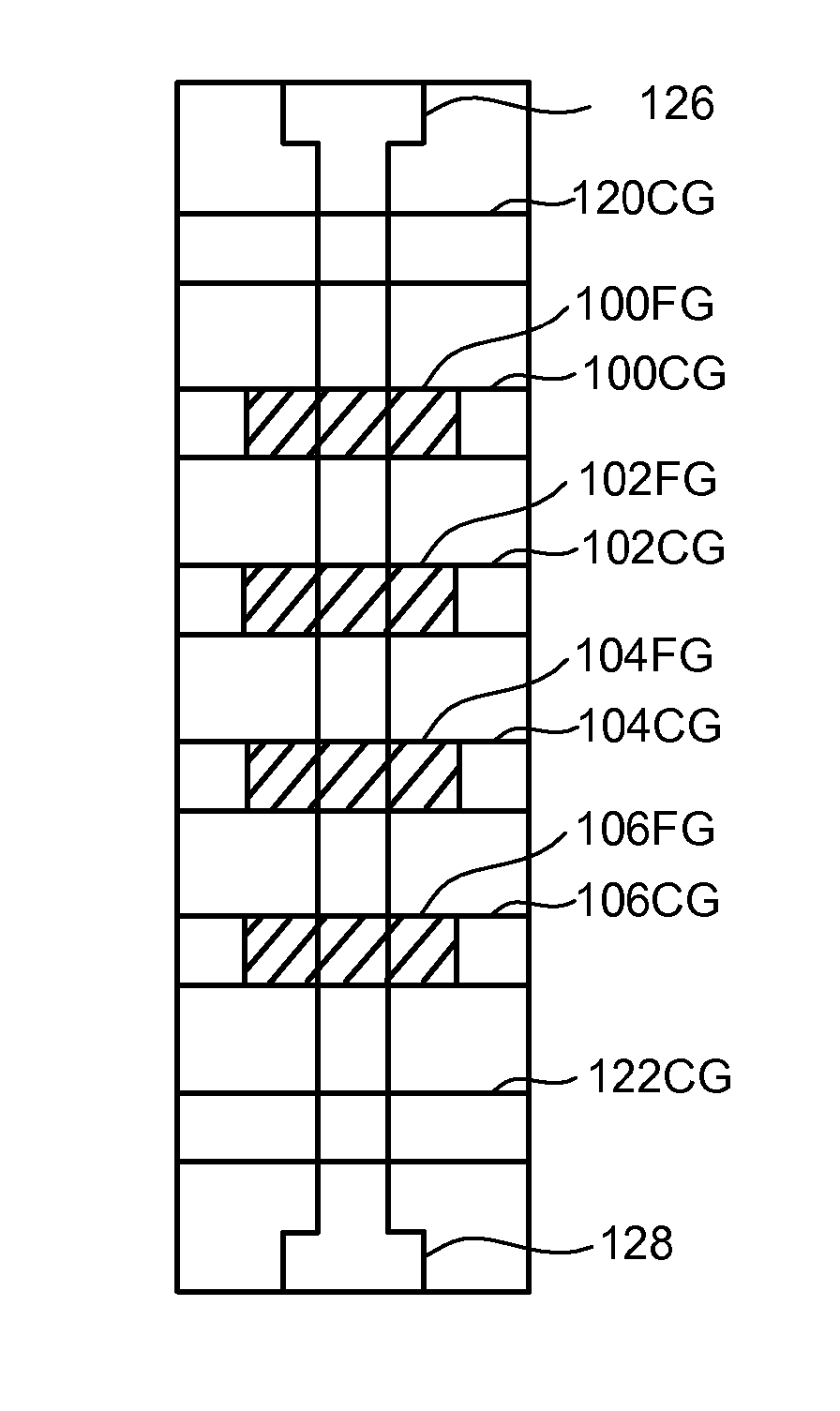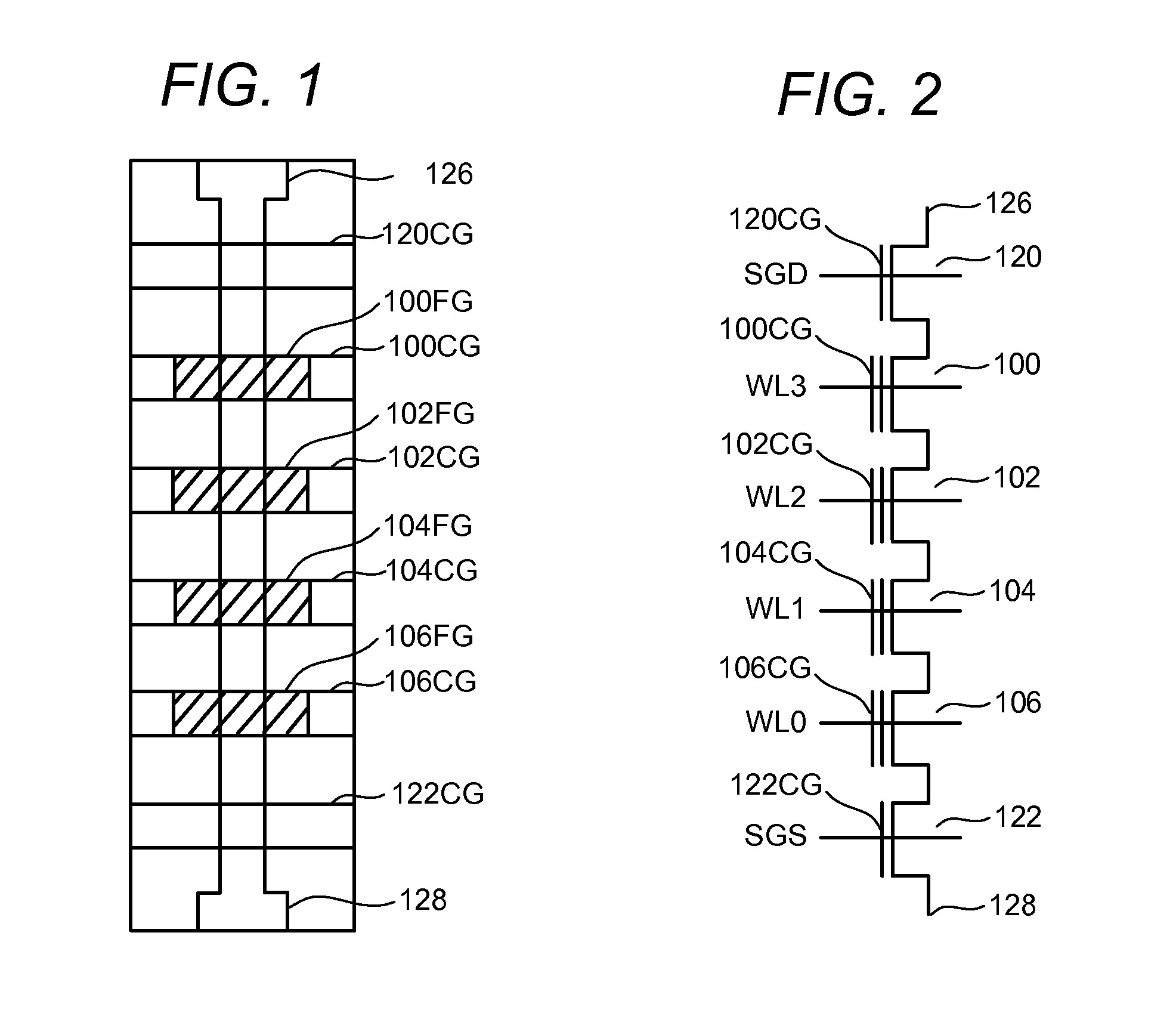Systems for Erase Voltage Manipulation in Non-Volatile Memory for Controlled Shifts in Threshold Voltage
a non-volatile memory and threshold voltage technology, applied in static storage, digital storage, instruments, etc., can solve the problems of over-erasure of faster erasing memory cells, short cycle life of memory cells or nand strings, increase program and erase times, etc., to reduce or eliminate over-erasure of storage elements of memory arrays and accurately position threshold voltages
- Summary
- Abstract
- Description
- Claims
- Application Information
AI Technical Summary
Benefits of technology
Problems solved by technology
Method used
Image
Examples
Embodiment Construction
[0054]FIG. 4 is a block diagram of one embodiment of a flash memory system that can be used to implement one or more embodiments of the present disclosure. Other systems and implementations can be used. Memory cell array 302 is controlled by column control circuit 304, row control circuit 306, c-source control circuit 310 and p-well control circuit 308. Column control circuit 304 is connected to the bit lines of memory cell array 302 for reading data stored in the memory cells, for determining a state of the memory cells during a program operation, and for controlling potential levels of the bit lines to promote or inhibit programming and erasing. Row control circuit 306 is connected to the word lines to select one of the word lines, to apply read voltages, to apply program voltages combined with the bit line potential levels controlled by column control circuit 304, and to apply an erase voltage. C-source control circuit 310 controls a common source line (labeled as “C-source” in F...
PUM
 Login to View More
Login to View More Abstract
Description
Claims
Application Information
 Login to View More
Login to View More - R&D
- Intellectual Property
- Life Sciences
- Materials
- Tech Scout
- Unparalleled Data Quality
- Higher Quality Content
- 60% Fewer Hallucinations
Browse by: Latest US Patents, China's latest patents, Technical Efficacy Thesaurus, Application Domain, Technology Topic, Popular Technical Reports.
© 2025 PatSnap. All rights reserved.Legal|Privacy policy|Modern Slavery Act Transparency Statement|Sitemap|About US| Contact US: help@patsnap.com



